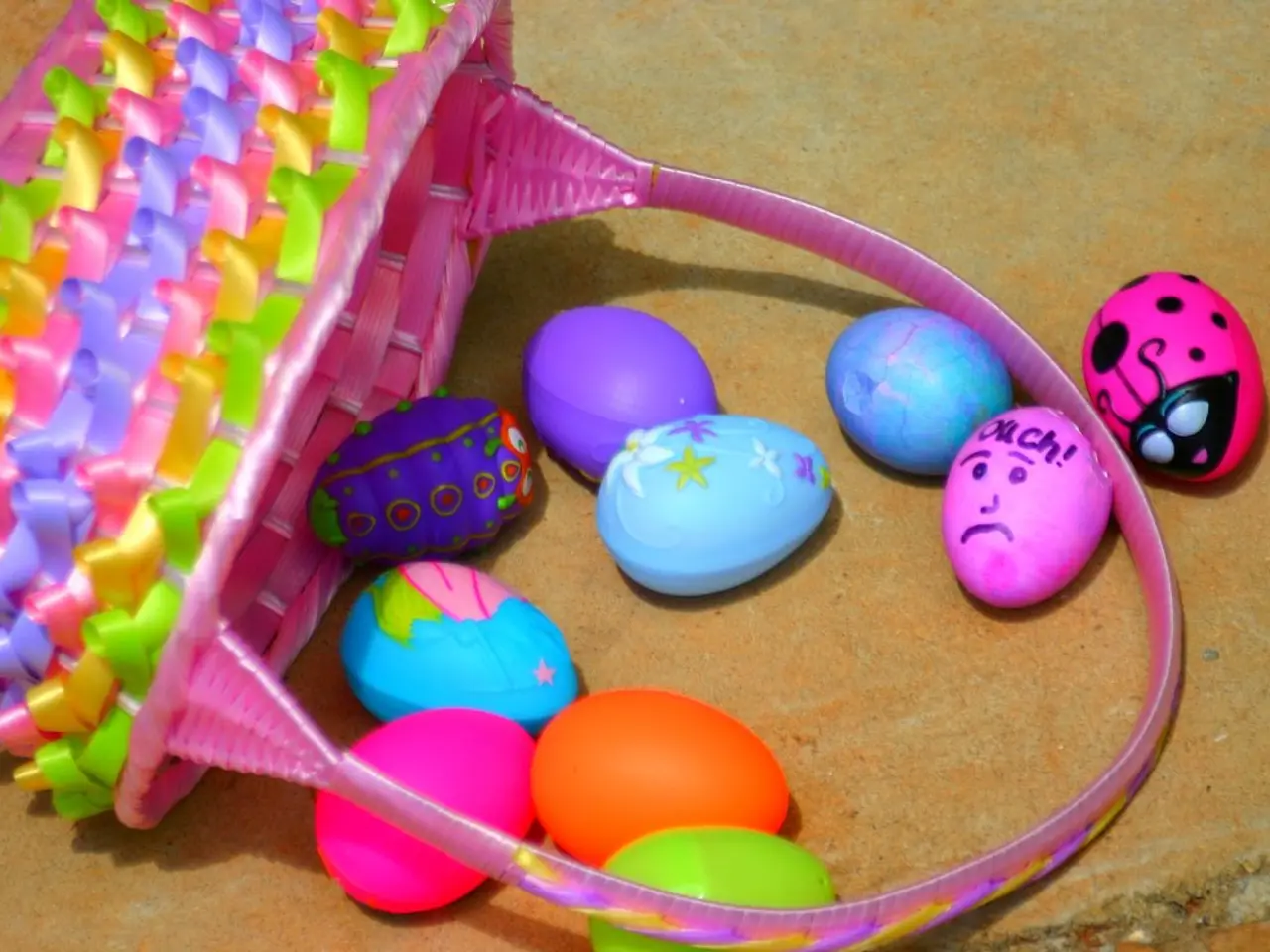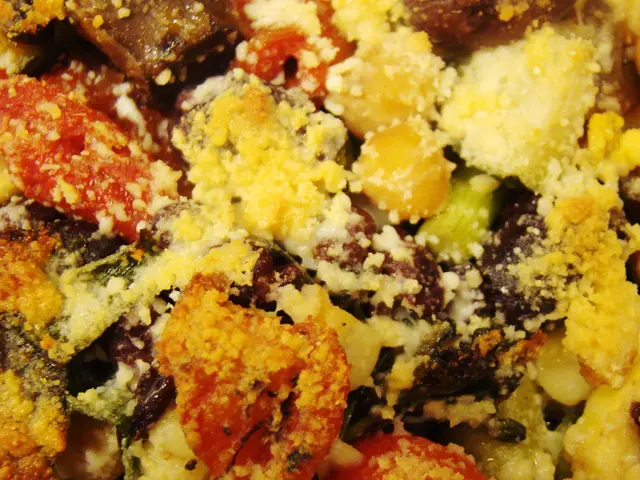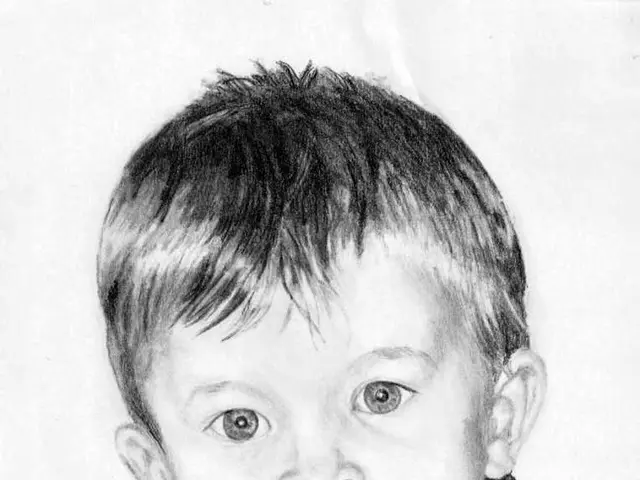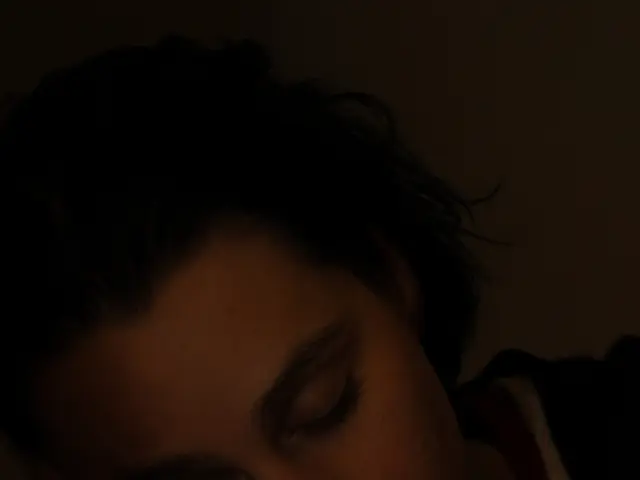Fun and Educational Science Projects for Children During Easter
===============================================================
In the spirit of Easter, let's delve into a world of sweet learning with some fun and educational candy-related science experiments for kids! Aside from the popular Peeps Easter experiments, there are several other engaging activities that can help children explore scientific principles in a tasty manner.
One such experiment involves growing Rock Candy at home. This edible endeavour offers a hands-on opportunity for kids to learn about crystal formation and saturation, making it an ideal project for a science fair with hypothesis testing and observation recording [1].
Another captivating activity is building a DNA Model using various candies. This visually engaging and edible activity teaches DNA structure, making complex concepts more accessible and enjoyable for young learners [3].
For those with an engineering flair, constructing a Candy House or Sugar Cube Tower can be a fascinating exercise. Kids can test their skills in building structures using candies or sugar cubes, while exploring concepts in material science, such as stability and the effects of water on structure strength [5].
Experiments like making Fizzy Lemonade or creating a Lava Lamp using citric acid, baking soda, oil, water, and effervescent tablets (some candy-effervescent) provide engaging demonstrations of chemical reactions linked to edible items [1][5].
Last but not least, using various candies to simulate Sedimentary, Metamorphic, and Igneous Rock Models can help kids understand geology concepts with a tasty twist [3].
These experiments are simple to set up using kitchen ingredients or common candies, making them accessible and engaging for kids while teaching scientific principles in areas like chemistry, physics, earth science, and biology [1][3][5].
Now, let's take a look at the Peeps Easter experiments, which have been a favourite among kids. The experiments involve adding water, heat, and coldness to Peeps. Each kid was given a cup of water and was encouraged to explore more science experiments on the Super Cool Science Experiments for Kids page.
The Peeps Experiment Sheet was created for the kids to make predictions, record observations, and draw conclusions. The kids put the Peeps in the microwave after making a prediction. The heat caused the air in the marshmallow to expand, making it puff up and grow.
After an hour in the freezer, the Peeps shrunk a little bit and became harder. The kids recorded their predictions and observations on the Peeps Experiment Sheet, and concluded that cold makes air molecules get closer together. The kids discussed what they saw and wrote their conclusions on the sheet.
The kids were asked to predict what would happen when they put the Peeps in water. The Peeps were then put in the freezer for further observation. The article discusses these candy science experiments for kids, specifically the Peeps Easter science experiments, offering a sweet blend of learning and fun this Easter season!
[1] Science Bob. (n.d.). Kitchen Pantry Science: Candy Experiments. https://www.sciencebob.com/kitchen-pantry-science/
[3] The STEM Laboratory. (n.d.). Edible DNA Model. https://www.stemlab.org/edible-dna-model/
[5] Steve Spangler Science. (n.d.). Fizzy Lemonade. https://www.stevespanglerscience.com/experiment/fizzy-lemonade
[5] Steve Spangler Science. (n.d.). Lava Lamp. https://www.stevespanglerscience.com/experiment/lava-lamp
Incorporating science into daily life, one could attempt a 'Sugar Cube Tower' project, testing architectural skills while examining factors like stability and water's impact on structure strength. Moreover, health-and-wellness enthusiasts may find pleasure in 'Fitness-and-Exercise' routines devised around their favourite candies, creating an enjoyable link between sweet treats and physical fitness. Lastly, the culinary world can extend beyond food-and-drink with 'Lifestyle' experimentation that integrates candies into various science-based tasks, such as creating edible models of rocks to learn geology concepts.




